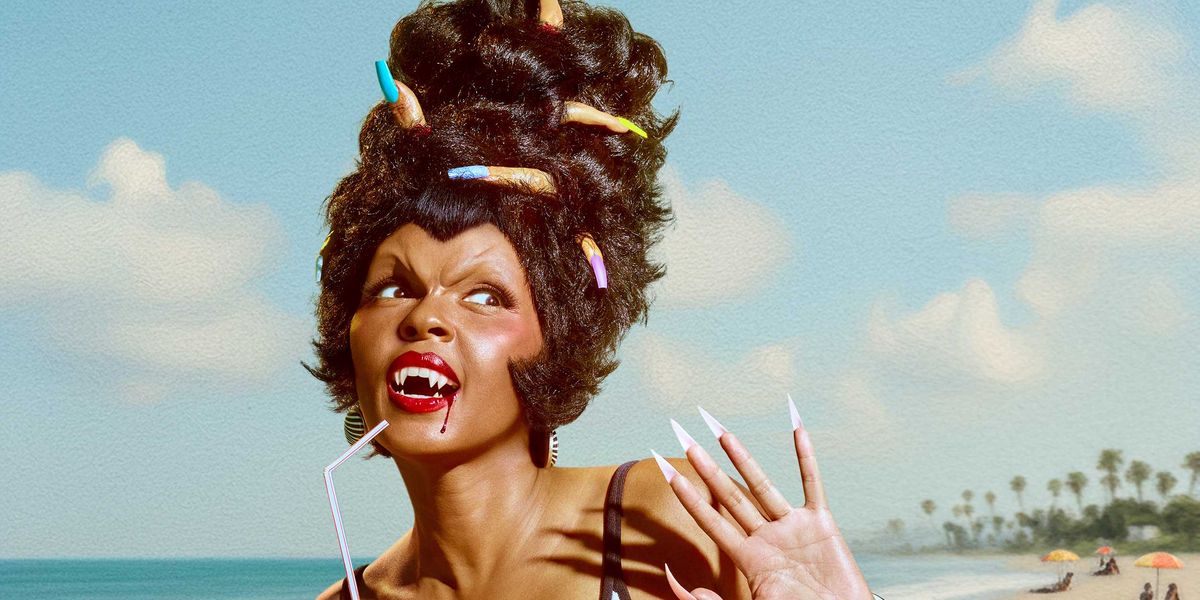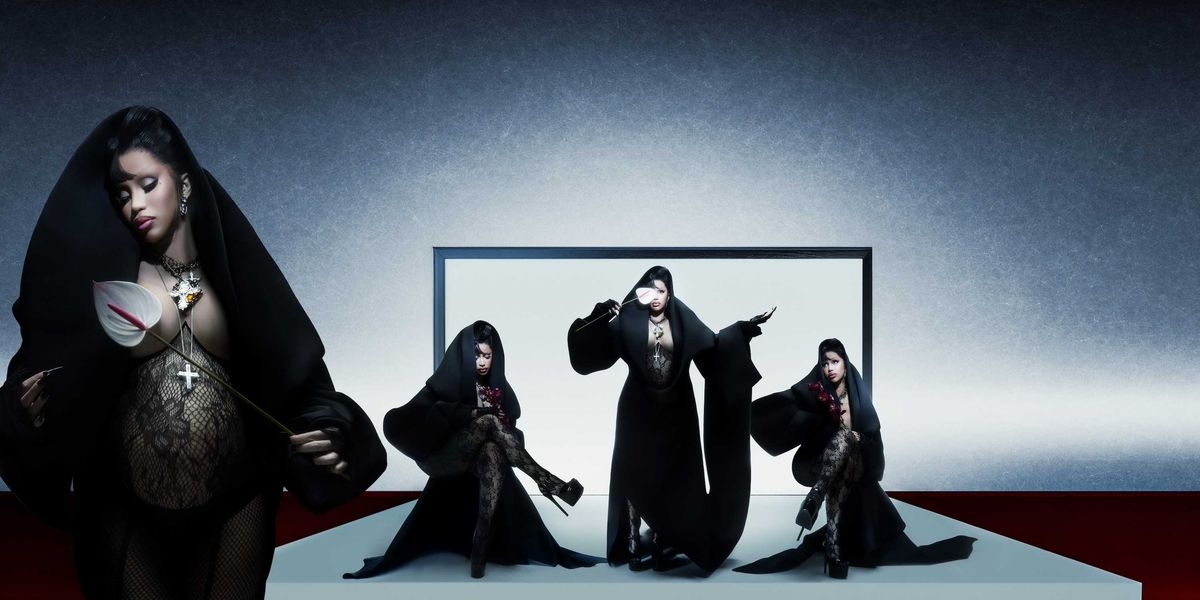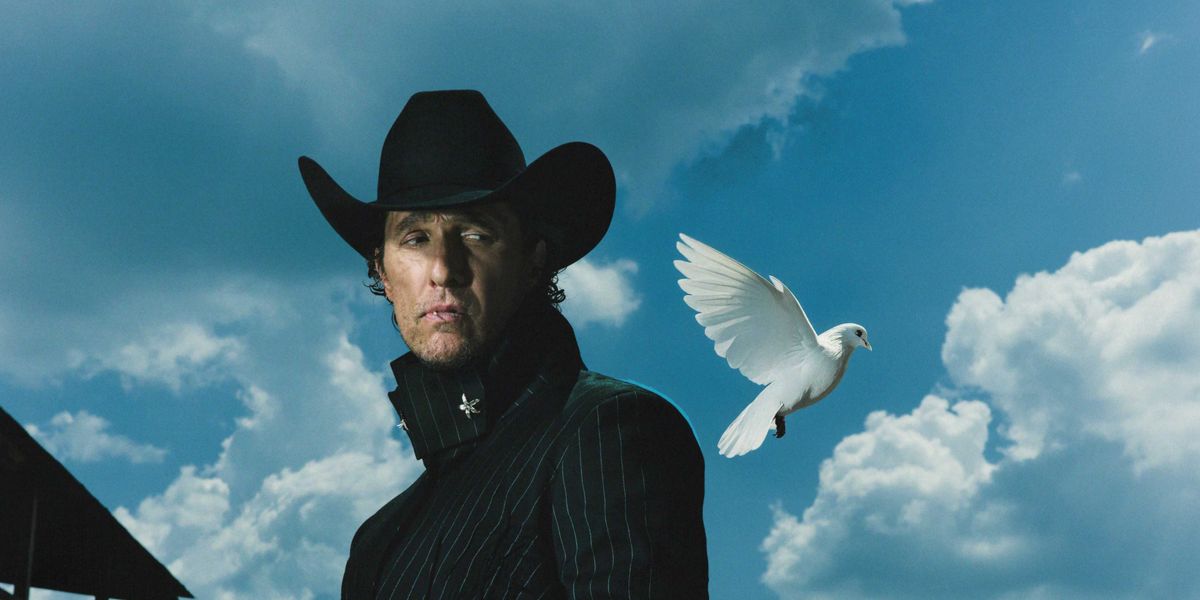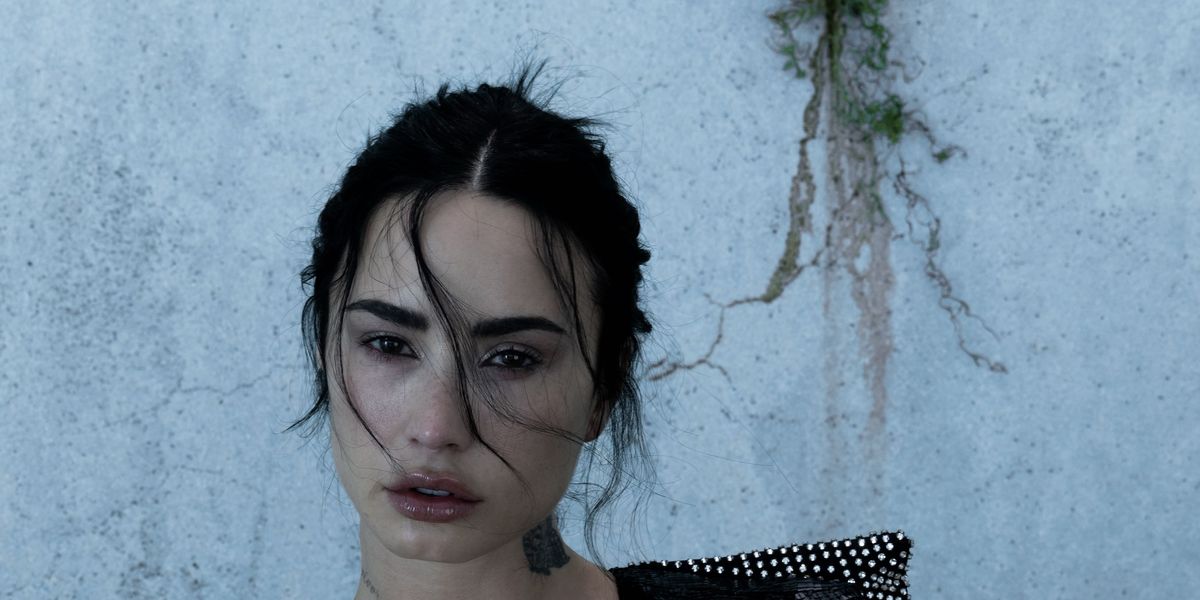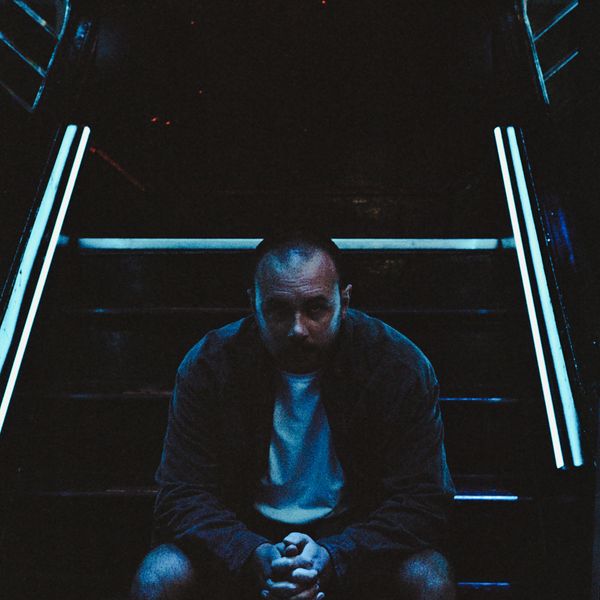
John Barclay and Kevin Saunderson Saved Paragon To Keep Brooklyn Dancing
By Tobias Hess
Aug 28, 2025“The pulse of New York has always carried with me,” DJ and Detroit techno pioneer Kevin Saunderson tells PAPER while sitting beside John Barclay — owner of the recently closed Bed Stuy club, Paragon and nearby techno staple, Bossa Nova Civic Club.
In the dim club basement — amidst a swirl of power tools, wood planks, and butcher paper — the two nightlife heavyweights are explaining the genesis of their budding partnership and their plans to re-open Paragon, whose abrupt closure in April surprised its many patrons and fans. “[Paragon] is the closest club that I've experienced in New York that gave me that [same] impression [as my early days in music] … and for it to [have] a young crowd: that’s so important,” Saunderson says. “It sets the tone for the future and helps the musical movement. It shows what [techno] really can and should be.”
For Saunderson, the venture with Paragon signals a return to Brooklyn. He grew up in Flatbush, but moved to the Detroit area when he was 10. He still kept his connection to the city, though, spending his teen years visiting in the summer. There, he was surrounded by the presence of disco and spent long nights listening to bright and bouncy mixes at The Paradise Garage. “I was just blown away — the speakers, the sound system, the people dancing,” he recalls.
The sounds he encountered in New York sparked something within him, and were notably distinct from the stark minimalism that was taking hold in Detroit, embodied by Saunderson’s friends and colleagues, Juan Atkins and Derrick May (the three of them referred to with reverence as The Belleville Three, the originators of Techno). Saunderson describes Atkins’s and May’s early music as inspired by “Kraftwerk, Parliament Funkadelic,” made with a "future mentality.” But even as he was enmeshed in this vivid, more minimalist futurism, he still felt pulled towards that indelible New York sound and energy — the bouncing bass, the chords, the soaring vocals floating around his dreamy consciousness.
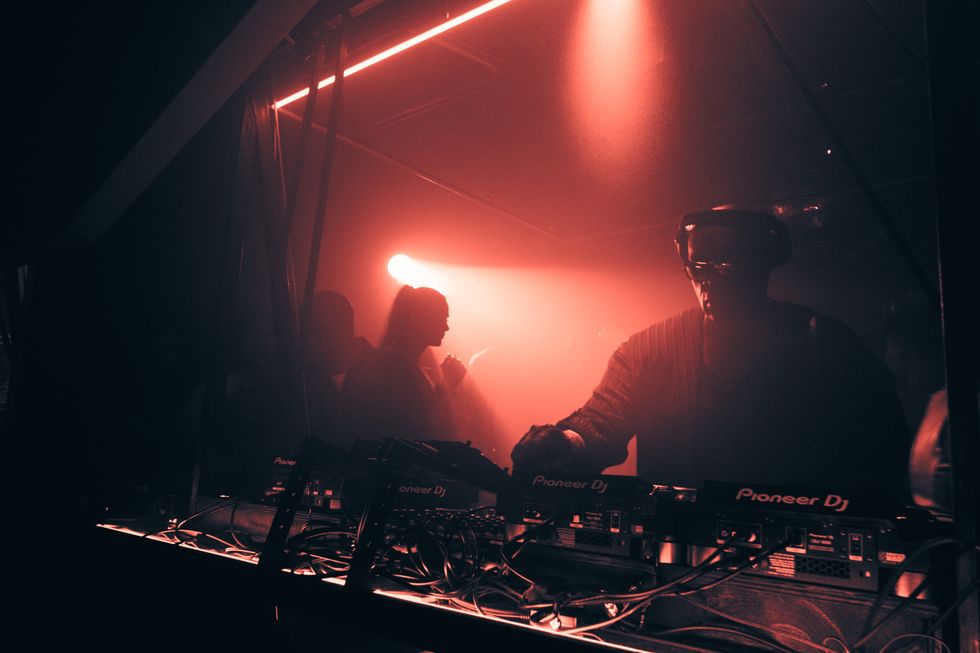
There’s a lot that Saunderson can do with his limited time between international gigs to sustain the legacy of his music and the genre he helped birth nearly 40 years ago with Atkins and May. Now, with electronic music a $12.9 billion global industry according to a 2025 IMS Business report, there is a renewed push to memorialize and codify techno, with museums in Detroit and Germany tracing the lineage and import of the global genre that was formed from Saunderson and co.’s madcap tinkering.
But memorialization and education is different from sustenance and progression. And the continuation of club spaces that provide opportunities for both legends and new acts alike to play, while teaching young audiences how to engage with the music (no phones on the dance floor, people!), is the backbone of any movement to sustain the vitality of dance music as an underground art form. “People get inspired, they feed off each other, and it leads to more creativity for the future,” says Saunderson. “I’m still a futurist. Always will be.”
That said, nightlife is a tough game. And John Barclay has seen it all through his smaller venue, Bossa Nova Civic Club and, of course, through the loftier Paragon, which has two dance floors and is, in his own delineation, a “proper club.” “[Bossa was] this original clubhouse for the scene that formed here in North Brooklyn,” Barclay says. “A lot of the people that started there, when nobody had ever heard of them — like LSDXOXO, Volvox, Yaeji —, turned into pretty big international artists. We were very excited to be a part of that, but [those artists] outgrew us in [terms of] physical size. So we wanted something to essentially follow that path with them.”
A confluence of factors, namely the social media-fueled post-pandemic nightlife boom, both helped to supercharge and complicate the business — contributing to Paragon’s unsteady path after its opening in 2022. Suddenly, “clubbing,” or “raving,” as well as being a DJ, were no longer niche and nerdy interests. Dance music became the very epicenter of the city’s cultural ecosystem. Market saturation, ever-rising costs and the financial demands of maintaining and improving a rowdy club space required a foreboding amount of capital. “By the time we had everything tuned up, the crowd noticed, and [Paragon] was packed out,” says Barclay. “But my big investor was like, ‘I'm tapped out. I can't put any more money in.’ Even though we were technically making a little bit of money, he was like, ‘If we hit another speed bump, I won’t be able to do it, so let's bow out with some grace.’”
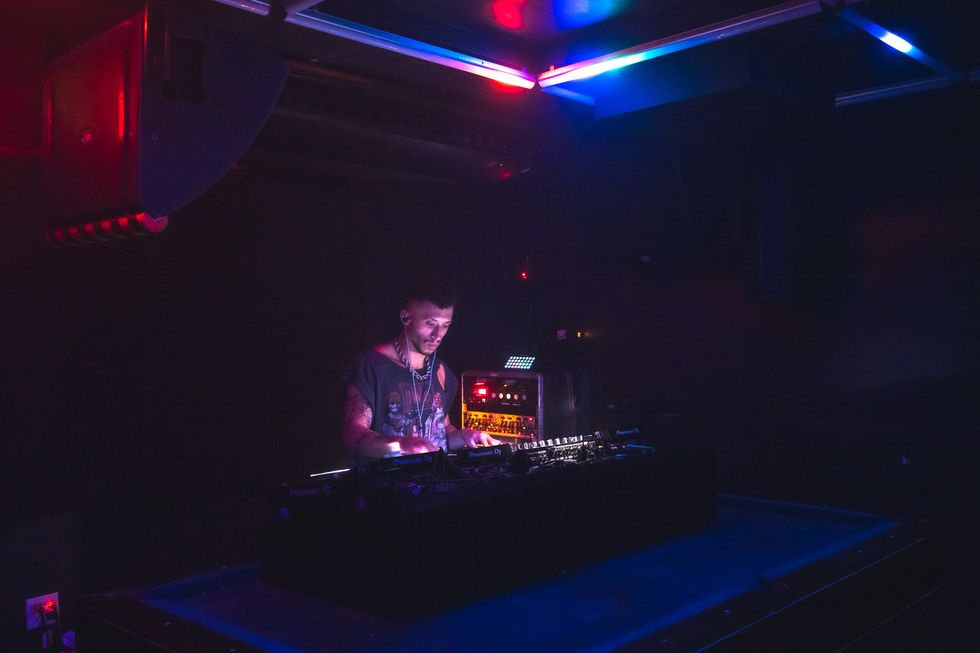
They did and announced a final but packed last month of programming in April 2025 that was equal parts mournful and celebratory. Behind the scenes, though, Barclay was chatting with “Saunderson and a number of other good samaritans” to revive the club.
Now, with the club re-opening in August, Saunderson and Barclay are gearing up for a new chapter for the club, with tune-ups to the space and the business model. The ethos of educating young Brooklyn dancers, while still providing a platform for rising talent is front of center, with resident DJs including Saunderson and forever legend Joey Beltram, alongside DJ Byrell the Great, TYGAPAW, Boy Harsher’s Augustus Muller and quest?onmarq.
“[This re-opening with Saunderson] is a real feel-good story for me, because I'm like, Okay, we don't have to completely sell ourselves out in order to stay open,” says Barclay. “I'm booking Kevin Saunderson and Joey Beltram: two of the most important people in the history of dance music … and we also have this super young, diverse crowd that is really here for the right reasons.”
“The intention of Paragon from the beginning was as a community space, for the people, by the people, booking the people” Luna la Sirena, Paragon’s resident videographer, also shares with PAPER. “You don’t know what you have until it’s gone, [but Paragon] is the people’s club. Having Kevin involved is so special. It’s real ass people running this.”
The road ahead will surely have its bumps, as is the case with all ventures in New York City, but we sincerely hope the mix can last as long as possible. PAPER chatted with Barclay and Saunderson for a deep-dive conversion on their journeys with dance music, their budding partnership, and their exciting plans with Paragon.
Kevin, I want to start with your own relationship with New York. You were born in Brooklyn before you moved to the Detroit area later in your childhood. I’m curious to hear a little bit more about what New York has meant to you personally and how it's impacted your sound?
Kevin Saunderson: I was born here in Flatbush, Brooklyn. I left when I was about 10 years old. I went to Detroit, but I always came back every summer because my father, my other relatives and brothers lived here. As I got older, I’d listen to [NYC station] WBLS on the radio. My brothers would play music and disco was becoming really popular, which [pushed] me towards the four on the floor [rhythm]. At 17, I started going to The Paradise Garage with my brother. I was just blown away — the speakers, the soundsystem, the people dancing. I was mesmerized. The pulse of New York, that vibe, always carried with me. This is before I knew I was going to make music. I was an athlete. By then, I'm playing football, which turned into college football. So I had no clue that [going to see music New York] was going to influence my path, but when I found electronic tools and started understanding how to make music, I had that inspiration to be a DJ and it all came together.
And I could have the best of both worlds, because I had influences from [NYC DJ] Larry Levan, from being with my brothers and hanging out in New York, listening to the radio. But I also had this other part [from Detroit] .. but I was a different Detroit guy, because I wasn't originally from Detroit like some of the other guys, [such as Juan Atkins and Derrick May]. So New York was powerful [for me musically]. Without that influence — I wouldn't say I wouldn’t be doing what I’m doing now — but it allowed me to be more experimental and open with my creativity with how I play.
Could you parse out the difference between New York music vs. Detroit music and how you brought them together? It’s such an important point for the emergence of your sound and techno writ large.
Kevin: On the New York radio, you would hear Evelyn “Champagne” King, Chaka Khan, Sister Sledge. The music had vocals, but it was dance music. Then you would go to the clubs, and you heard these longer versions, more spaced out edits that Larry [Levan] or Shef Pettibone decided to do: remixes or [new] arrangements of the music. The vibe was definitely more vocal, melody and chord related, and [featured] great bass lines.
Detroit music was more like Kraftwerk, Parliament Funkadelic. It was futurist, or had a future mentality, like Cybotron, which is Juan Atkins. I wasn't completely like that. Cybotron was kind of electro. He called it techno at the time. The vocals were very robotic, kind of like Kraftwerk. It never had singing or anything like that.
So [these cities] influenced me to bridge the two, and that's why I came up with Inner City. My first record was Kreem, “Triangle of Love”. It was a vocal record. So I really got both sounds. I could make a dark, banging, underground E-dancer techno record that has no vocals, or, I could use my vocals, but I always had my own way. I stood out in Detroit from the other guys [Juan Atkins and Derrick May], because they strictly made music with no vocals, or only robotic vocals.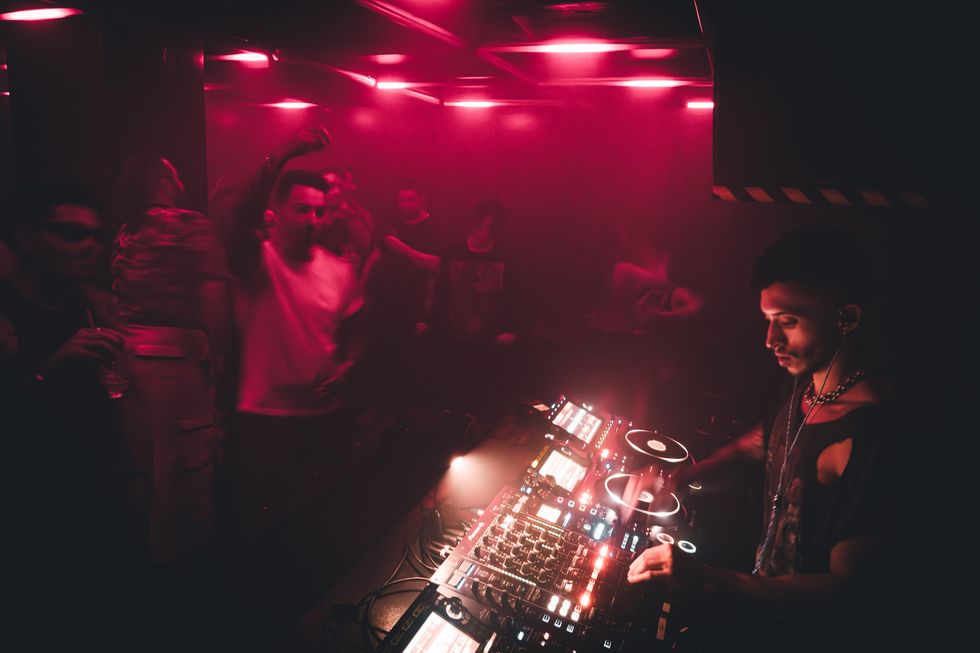
Kevin, where did New York sit in terms of your touring career as you were coming up? What was the scene like in New York as techno was expanding around the world?
Kevin: In the early part of my career, [the New York live scene] wasn't that healthy. I played the Tunnel. I played some other New York spots, but it wasn’t really until social media started kicking in [that I played in New York more]. I did the Palladium with Inner City, because Inner City was huge, but I didn't really play a lot of the New York clubs. I didn't really get that opportunity, even though I was playing everywhere overseas.
That’s so interesting. That brings us to the expansion of NY nightlife. John, you've had a huge role to play in the growth of dance music in the city. Now, there are so many different clubs and collectives. Tell me a little bit about the dance music scene when you opened Bossa Nova Civic Club in 2012?
John Barclay: At the time, if you were into dance music, it was almost like you were into Magic The Gathering. It was a very small community that was keeping it alive in New York. And this was post-Giuliani, with Cabaret Laws, when they shut all the clubs down. There was just literally nowhere to play, nowhere to DJ, nowhere to hear good dance music. In 2014, the government backed off the Giuliani stuff (when the government shut down The Limelight and The Tunnel), so the authorities weren’t looking to shut clubs down like they had a decade or so earlier. So [dance music] started to creep back, and then people started to realize, Oh this is really fun. We forgot about dance music. And then things really blew up around 2014, or so: Output opened, Good Room, Nowadays, and now, there's a lot of stuff. There's some pros and cons with that from the business side … When we opened Bossa, we were the only show in town. So we really benefited from that. Now, certainly from a business perspective, you could make the argument that things are, “over saturated.” But being someone who enjoys dance music and culture: there are a lot of great options here all the time, so the scene is pretty strong in most senses.
When did you two initially connect?
John: Around three years ago, we booked Kevin as E-Dancer at [Paragon]. We were obviously very thrilled to have him here. We're all inspired by everything he's done. The first night Kevin played went well, but I did say to him, “Our crowd here is comparatively very young.” One of the things that we struggled with when we opened [Paragon] is a lot of the super young kids don't really know all the history [of dance music], or they're not maybe as hung up on it as we are. But I told Kevin, “Let's give it a shot. Even though these kids might not know who Kevin Saunderson is now, one thing about them is they like good music.” They might not have been super obsessed with history like a lot of us are, but the next time he came back, it was slammed. And then the next time after that, it was complete madness. And every single time, it’s built and built. I knew [our partnership] was going to resonate well with people. I knew everybody would be excited about having him on board, but my mind was pretty blown by how well it went with super young people who really learned about Kevin, everything he did, and the history of Detroit techno, by seeing him play. They’re like, Yo Who the fuck is this guy? And then they start Googling. So now we have all these 23 year old kids who are super excited about real high quality dance music. It feels good to have this full circle moment for me. But also, as somebody who’s in his 40s now … everybody's always hating on young kids. [People say,] “Oh, the young kids: all they do is look at their phones.” I'm like, Not here. They're going bananas here. It's a real feel-good story for me, because I'm like, Okay, we don't have to completely sell ourselves out in order to stay open. I'm booking Kevin Saunderson and Joey Beltram: two of the most important people in the history of dance music as far as I'm concerned. And we also have this super young, diverse crowd that is really here for the right reasons.
Kevin, I'm curious to hear that story from your perspective? Around coming to Paragon, but also coming back to New York more regularly and seeing the scene here grow?
Kevin: I played a few other clubs before. I got to see what was going on in New York at Nowadays and Output. I was playing more regularly in New York, but when I played at Paragon for the first time … [I felt that] there was something about the room that just grabbed me. These young kids, or young adults, they probably didn't know who the heck I was … but the ones that were there, they danced, and I liked the energy. As I came back again, I saw the growth of the whole place and the connection of people [to the music]. People were not using their phones and people were dancing and screaming to the music. That is really important, because I come from a generation where you really went for the music. I felt like [Paragon] is the closest club that I've experienced, especially in New York, that gave me that [same] impression … and for it to be a young crowd: I thought that that’s so important because it set the tone for the future. That helps the musical movement, and it shows what it really can and should be. It’s fine to go to bigger events. I played at Mirage: that's a different experience. But [Paragon] is definitely the best experience. I had always seen the potential in Paragon, so when I found out, “Okay, this might be our last night.” I was like, “No way. Come on.” So I'm proud to be a part of it and see it come back in a stronger way.
Going back to the roots of Paragon: John, I’m curious if you could describe the intention for Paragon when you initially opened it in 2022?
John: [Our other venue,] Bossa Nova Civic Club is a smaller venue that's open seven nights a week. It’s this original clubhouse, headquarters for the scene that formed here in North Brooklyn. A lot of the people that started there when nobody had ever heard of them — LSDXOXO, Volvox, Yaeji — turned into pretty big international artists. We were very excited to be a part of that, but we were like, “Wow, these artists that we invested so much energy into and feel so connected to have outgrown us in physical size. These people can fill out real rooms now.” So we wanted something to essentially follow that path with them. And for me, and our team, it's always been a dream to have a real venue like [Paragon], something a little bigger and a little more serious.
Fast forwarding to its closure: can you share a little behind the scenes about the decision to close in 2024?
John: It took a while to work things out [at the club and improve the space], and it cost a ton of money. We spent a lot of money the first couple years, and then by the time we had everything tuned up, the crowd noticed, and it was packed out. But my big investor was like, “I'm tapped out. I can't put any more money in.” Even though we were technically making a little bit of money at the end, he was like, “If we hit another speed bump, I won’t be able to do it, so let's bow out with some grace.” And we did. And then we said, “Hey, look, if anybody is interested in coming in as partners and helping the place, we're here for it. We are also for sale.” Kevin reached out and a number of other good samaritans reached out as well. We put together a new team, tuned up the business model, and now we're taking another stab at it.
Kevin, this is the first time you're involved in a venue?
Kevin: Yes. I’ve done events, but this is a little different.
Why this and why now?
Kevin: You need a good team at a club and I know that John has been doing this, and I've seen the progression. Another part was being from Brooklyn and wanting to see this place continue. I always thought I might get involved in something in Detroit too. Also I may be five to seven years from retiring from traveling the world as much as I do — not musically, because I'm always going to be connected with the communities, have input and teach.
I did the festival in Detroit [now named Movement Festival], which I produced in 2005 [as Fuse-in Detroit], before Paxahau produced it. The city gave me four months' notice. [They said,] “We want you to do this festival. You got to do it.” So I pulled it off, and I saw how much it took. It took away from me doing what I love doing. If I was home [in Detroit] all the time, I could produce and be involved in events and clubs, because I love all that. But I can't travel the world without a great team and do that. So that kept me from getting more involved [in live events and venues].
What does this new chapter look like for Paragon?
John: Our main objective right now is to get back into the rhythm that we were in. During our last six months, we did great here. We want to reestablish that. We've made some tweaks to just about every parameter here. We want to keep fine tuning things. Nightlife is not an easy business. You definitely won't survive if you take your clientele for granted. We would like to keep the spirit of authentic dance music alive. I wasn't around for Paradise Garage or Palladium, but New York City has a real rich club history, and we want to keep that spirit going.
Kevin, I'm really struck by what you said about this club being an incubator for the next generation. There's a lot that you do to further your legacy, but supporting a club that supports new artists seems like one of the most efficient ways to make sure that the genre lives on.
Kevin: People get inspired, they feed off each other, and it leads to more creativity for the future. I’m still a futurist. Always will be.
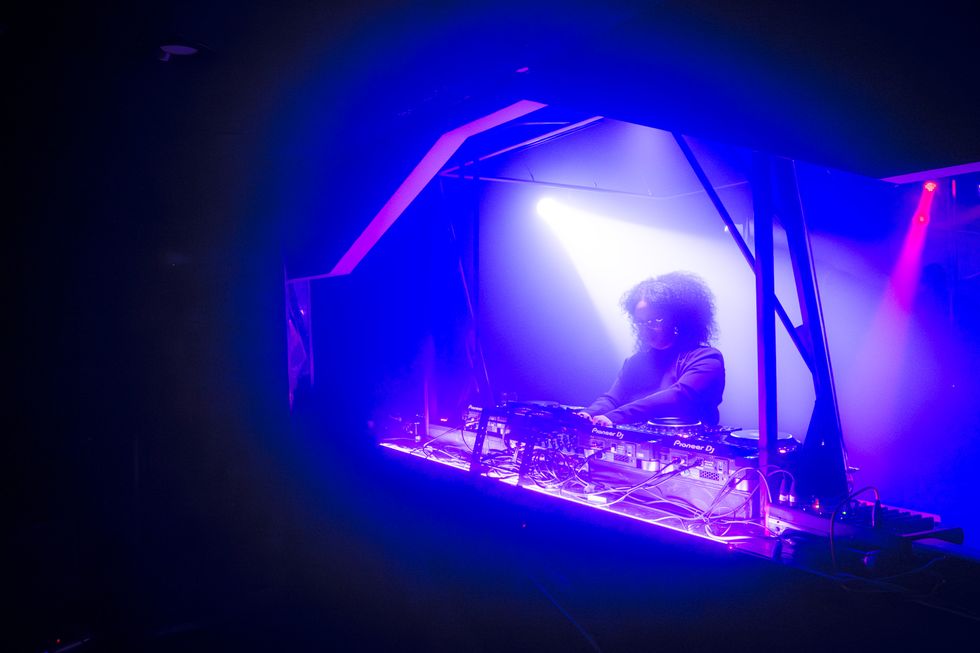
Photography: Matt Wille, Dereck Monroy
MORE ON PAPER
Entertainment
Rami Malek Is Certifiably Unserious
Story by Joan Summers / Photography by Adam Powell
Story by Joan Summers / Photography by Adam Powell
14 November
Music
Janelle Monáe, HalloQueen
Story by Ivan Guzman / Photography by Pol Kurucz/ Styling by Alexandra Mandelkorn/ Hair by Nikki Nelms/ Makeup by Sasha Glasser/ Nails by Juan Alvear/ Set design by Krystall Schott
Story by Ivan Guzman / Photography by Pol Kurucz/ Styling by Alexandra Mandelkorn/ Hair by Nikki Nelms/ Makeup by Sasha Glasser/ Nails by Juan Alvear/ Set design by Krystall Schott
27 October
Music
You Don’t Move Cardi B
Story by Erica Campbell / Photography by Jora Frantzis / Styling by Kollin Carter/ Hair by Tokyo Stylez/ Makeup by Erika LaPearl/ Nails by Coca Nguyen/ Set design by Allegra Peyton
Story by Erica Campbell / Photography by Jora Frantzis / Styling by Kollin Carter/ Hair by Tokyo Stylez/ Makeup by Erika LaPearl/ Nails by Coca Nguyen/ Set design by Allegra Peyton
14 October
Entertainment
Matthew McConaughey Found His Rhythm
Story by Joan Summers / Photography by Greg Swales / Styling by Angelina Cantu / Grooming by Kara Yoshimoto Bua
Story by Joan Summers / Photography by Greg Swales / Styling by Angelina Cantu / Grooming by Kara Yoshimoto Bua
30 September
Music
Demi Lovato Is No Joke
Story by Ivan Guzman / Photography by Jason Renaud / Styling by Chris Horan/ Makeup by Loftjet / Set design by Allegra Peyton
Story by Ivan Guzman / Photography by Jason Renaud / Styling by Chris Horan/ Makeup by Loftjet / Set design by Allegra Peyton
15 September

